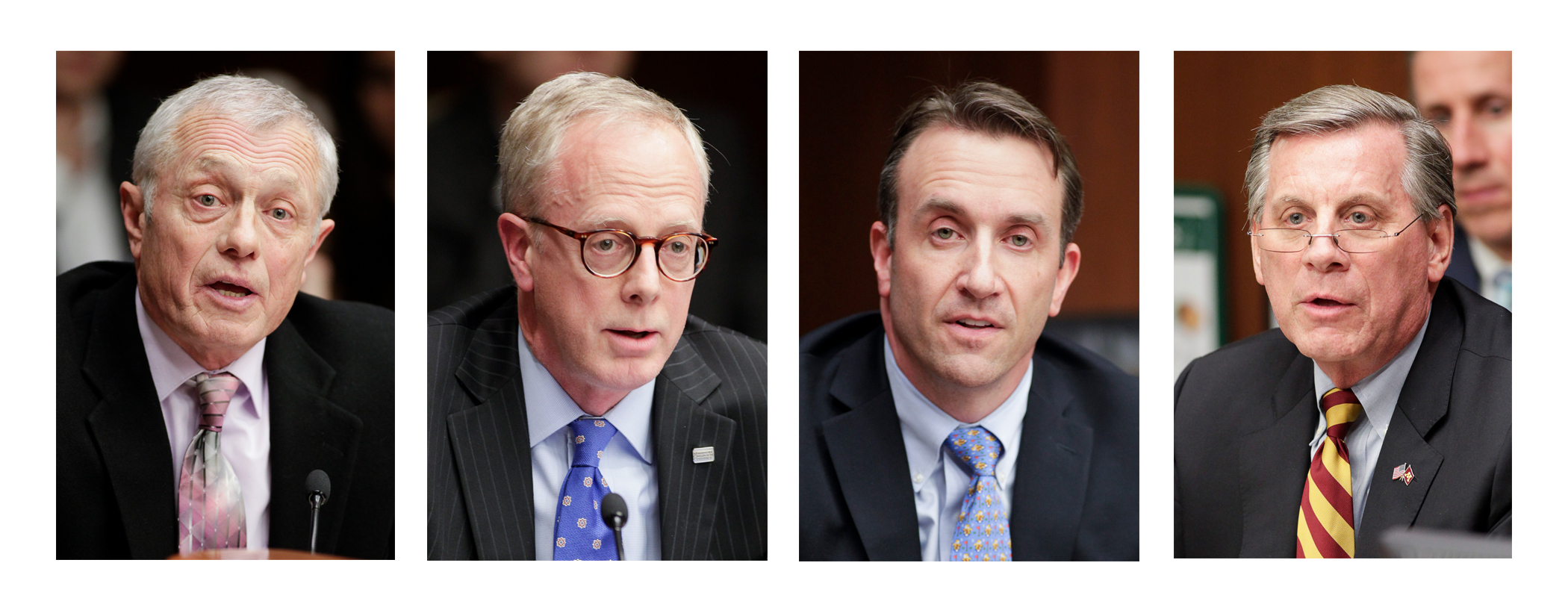Former House speaker among four people nominated for U of M's Board of Regents

Before the Legislature can officially appoint anyone to the University of Minnesota Board of Regents, the House and Senate higher education committees first decide whom they think is best qualified.
At a joint convention Tuesday night, legislators endorsed candidates for four board positions. The six-year terms up for election represent the second, third and eighth congressional districts, and one is an at-large position.
The quartet recommended to have their name placed before a joint convention of the Legislature are:
- Steve Sviggum of Kenyon from the second congressional district;
- Darrin Rosha of Independence from the third congressional district;
- David McMillan of Duluth from the eighth congressional district; and
- Tom Devine of Chanhassen for the at-large seat.
All but Sviggum currently serve on the board.
No date has been set for the joint convention. Elected regents take office immediately upon election by the joint convention. Anyone can have their name offered at the joint convention.
“The university drives the State of Minnesota in every possible way,” Sviggum said.
Sviggum, the House speaker from 1999-2006, was nominated without going through the interview process which other candidates had. He previously served on the board from 2011-12, but emotionally resigned due to conflicts of interest regarding a position he also held with the Senate Republican Caucus.
Sen. Jason Isaacson (DFL-Shoreview) questioned the politicizing of the process when someone can have their name submitted for a vote without following the process from the beginning.
Who are the regents?
The 12-member Board of Regents is the university’s governing body. Among its duties is to clarify the university’s mission, approve programs necessary to fulfill that mission and monitor and evaluate the performance of the institution to fulfill its mission.
One-third of the board is elected by the Legislature in each odd-numbered year. One regent is nominated from each of Minnesota's eight congressional districts, and four from the state at large.
Of the 12 finalists who shared time in the spotlight, subjects such as university administration changes, partisanship, the nomination process itself, angst in the athletic program and focusing on future success came to the forefront for the committee.
Nomination by a joint committee was first established in 2005. A candidate needs a majority vote of the 201-member Legislature to be elected to a seat. Legislators are not bound to vote for only the finalists presented.
Candidates were plentiful, with 36 applications submitted to the Regent Candidate Advisory Council by the Dec. 5 deadline. Only one applicant had applied for the eighth district position. Interviews with 17 candidates narrowed the field to the dozen finalists.
“We appreciate the opportunity to be involved and help the Legislature in this very important process,” said Dan Wolter, the council’s vice chair.
Attention ahead:
Annually the board highlights specific topics for emphasis in the coming year. The extra attention serves to assist the university president and administration.
According to its website, the board’s priorities for 2016-17 include:
- raise the national profile of the university’s academic health sciences and guide strategic evolution of the medical school and its affiliated clinical practice;
- establish standards for excellence in the student experience at each campus, including admissions principles, sound academic advising, meaningful opportunities for reciprocal community engagement, and learning outcomes that prepare graduates for life;
- develop a system-wide strategic plan that illuminates and embraces the 21st Century land grant mission and its impact on the people of Minnesota; and
- examine options to further operational excellence and create a long-range plan to secure the university’s financial future.
Related Articles
Search Session Daily
Advanced Search OptionsPriority Dailies
Ways and Means Committee OKs proposed $512 million supplemental budget on party-line vote
By Mike Cook Meeting more needs or fiscal irresponsibility is one way to sum up the differences among the two parties on a supplemental spending package a year after a $72 billion state budg...
Meeting more needs or fiscal irresponsibility is one way to sum up the differences among the two parties on a supplemental spending package a year after a $72 billion state budg...
Minnesota’s projected budget surplus balloons to $3.7 billion, but fiscal pressure still looms
By Rob Hubbard Just as Minnesota has experienced a warmer winter than usual, so has the state’s budget outlook warmed over the past few months.
On Thursday, Minnesota Management and Budget...
Just as Minnesota has experienced a warmer winter than usual, so has the state’s budget outlook warmed over the past few months.
On Thursday, Minnesota Management and Budget...